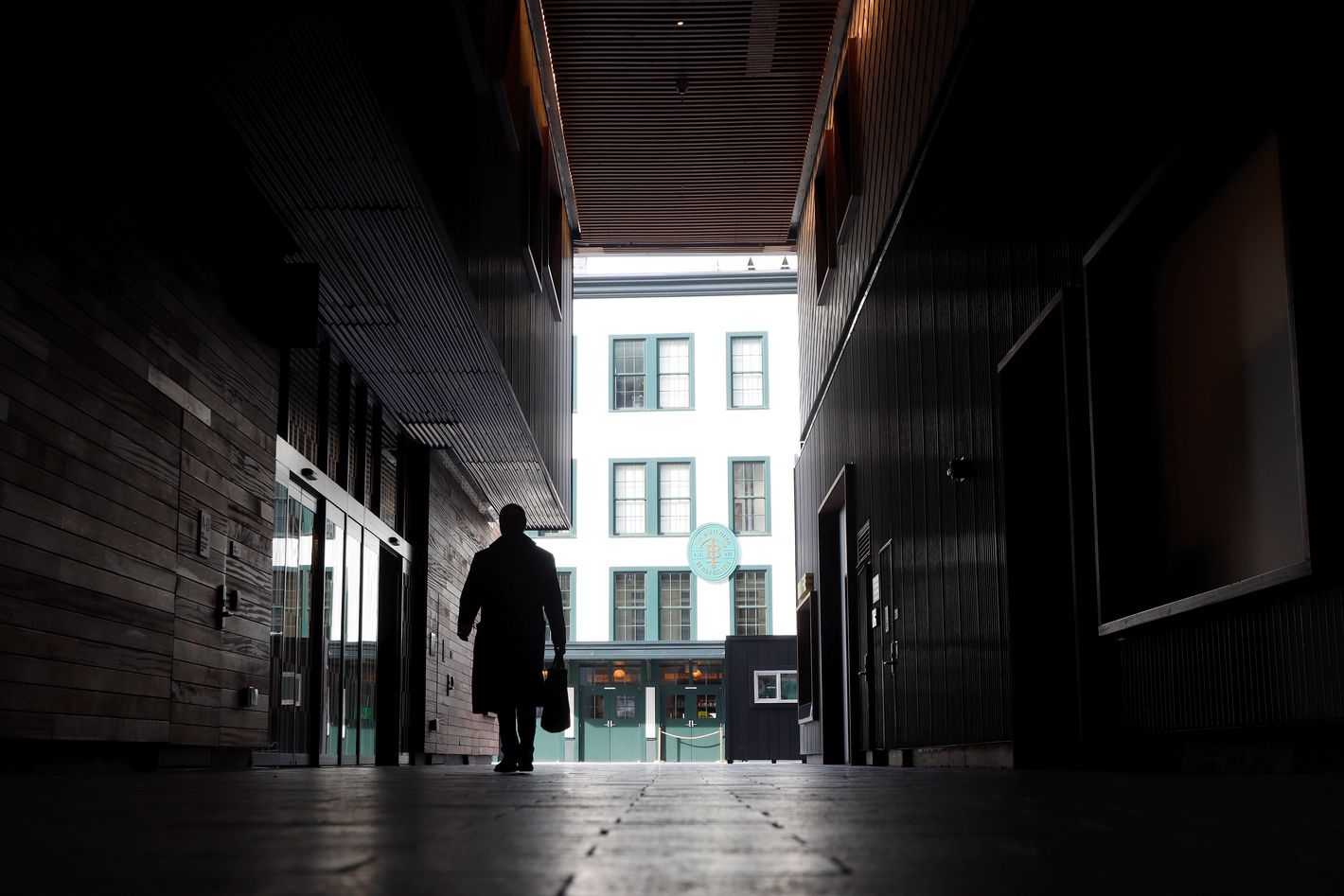when you want, where you want.
CJ Television
The Tin Building Is a $200 Million Food-Hall Flop
 Photo: Gary Hershorn/Getty Images
Photo: Gary Hershorn/Getty Images
Despite working in an office that is a 12-minute walk away from the Tin Building, I had never set foot inside the sprawling Jean-Georges Vongerichten–branded food hall until this week. What would compel me to visit? Fancy pastries? A Jean-Georges restaurant called House of the Red Pearl? A wine counter that offers the same ambience as an airport bar? A sense of professional obligation couldn’t bring me to make the trip, since my colleagues went instead. Tammie Teclemariam discovered that it was barely open at first, and Adam Platt braved the Tin Building’s two stories after it opened only to find “no sense of context or continuity” among its various stalls and eateries, comparing his time there to “some VIP Disney restaurant” or “a cruise ship bobbing out on the ocean, a thousand miles from home.”
What did eventually get me through the door was morbid curiosity: Gothamist reported the other day that the enterprise is losing its owner, Seaport Entertainment Group, “more than $100,000 a day on average,” that multiple stalls and restaurants are currently closed, and that more than 100 workers — “primarily … Latino kitchen and custodial workers,” per the story — lost their jobs after surprise employment-authorization checks. (The Tin Building’s various reps and stakeholders would never say this was a convenient way for a struggling business to quickly purge its most vulnerable workers; you can make up your own mind.)
Opened in the middle of 2022, the Tin Building was built by the funnily named Howard Hughes Corporation at the staggering cost of $194 million. (I have to imagine that the amount spent to plaster opening-announcement billboards around the city was more than most independent restaurants’ entire construction budgets.) This new addition to the seaport featured a dozen restaurants and food counters, four bars, groceries, a fishmonger, and more. What the project failed to offer was a persuasive case for its own existence. It’s Eataly without much Italian food? A really big food hall? A more-out-of-the-way Chelsea Market?
My visit did little to dissuade me of my lingering skepticism. I’d figured since I was going anyway, I’d pick up some groceries for dinner, but I was apparently too early: A fruit-and-vegetable display was still roped off, along with much of the rest of the market. Instead, I found a few people eating pastries and drinking coffee at the T Café bakery case, a scene one might find at any Blank Street. The soundtrack (Jenny Lewis when I walked in) was ideal for a medium-popular coffee shop; this one happens to be tucked down on the bottom edge of Manhattan.
“If you build it, they will come” only applies when the thing being built doesn’t already exist in a more convenient location. The Tin Building has a nice bakery, a beer bar, a sushi counter, some pizza. And so does every neighborhood in New York. Given the limited options on my visit, I decided to buy a bunch of $7 croissants — a bulbous, flaky raspberry version with bright-red ribs; thick-glazed pain aux raisins that was as much a tart as a croissant — and take them back to share at Grub Street HQ. “Where did these come from?” asked one co-worker as I unpacked them in the office kitchen. The Tin Building, I told her. “Oh yeah, I went there when it opened,” she said. “I haven’t gone back.” Why would she? The name, stamped atop the green pastry boxes (Tin Building by Jean-Georges, officially) puts the emphasis squarely on the real-estate play, not the actual food.
It isn’t surprising that so many similar projects have met equally lukewarm receptions. Rockefeller Center’s Tishman Speyer–led transformation into a hub for chefs who already run good restaurants elsewhere is, at best, a hit-or-miss affair. Meanwhile, Eater has been dutifully tracking the demise of the city’s vendor centers, all of which feature some combination of the words “market” and “hall”: Citizens Market Hall, Gotham West Market, Williamsburg Food Hall, the Market Line.
The Tin Building is hardly a goner, and the scene inside was not nearly as grim as it could have been. (The brassy, glassy Roman and Williams design still looks and feels so nice.) Maybe it isn’t too late to turn things around and evolve the project into something interesting: These people have the space, the money, and the big-name chef. Now they need some fresh vision. Otherwise, I don’t see a reason to ever go back.
Related
All Rights Reserved. Copyright , Central Coast Communications, Inc.